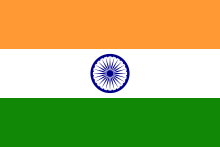বাংলা ভাষা - Bengali language



| II | This is a Category II Language. |
Bengali, or Bangla, is an Indo-Aryan language spoken predominantly in Bangladesh and in the Indian states of West Bengal and Tripura by approximately 200 million people. After Hindi, Bengali is the second most spoken language in the Indian subcontinent, and among the top 10 most spoken languages in the world. The language has a rich literary heritage and underwent a renaissance in the late 19th century.
Preliminaries
The examples of Bengali words, phrases, clauses and sentences used in this book are generally presented simultaneously in three written forms: one using the Bengali script, a transliterated version using Latin letters, and an English translation.
The Bengali-to-Latin transliteration scheme is the one followed in the English Wikipedia and can be seen here.
Contents
Introduction
- ০.০.১. A Short History of Bengali
- ০.০.২. Modern-day Bengali
- ০.০.৩. Dialects of Bengali and Their Differences
- ০.১. Overview of the Bengali Script
- ০.১.১. Vowels
- ০.১.২. Consonants, Part One
- ০.১.৩. Consonants, Part Two
- ০.১.৪. Diacritics in Bengali
- ০.১.৫. Symbols of Note
- ০.১.৬. Bengali Conjuncts, Part One
- ০.১.৭. Bengali Conjuncts, Part Two
- ০.১.৮. Other Symbols related to Bengali (in Unicode)
- ০.১.৯. (introducing numerals isn't necessary, look at these contents)
The Bengali abugidato be broken upConjunctsto be broken up
Lessons, exercises (in two sets), and culture
|
|
|
Older pages (to be integrated eventually)
- Greetings
- Talking about oneself
- Asking questions
- Liking and disliking
- Shopping
- Staying at hotels
- Letters
- Traveling
- Staying well
- Emergencies
- Animals
- Birds
- Body parts
- Dressing
- Flowers
- Foods and drinks
- Fruits
- Housing
- Household objects
- Months
- Music and dance
- Numbers
- Plants
- Relations
- School
- Time and dates
- Tools
- Vegetables
- Common phrases
- Overview of grammar
- Sentence patterns
- Verbs
- Nouns
- Adjectives
- Postpositions
- Auxiliaries
- External references